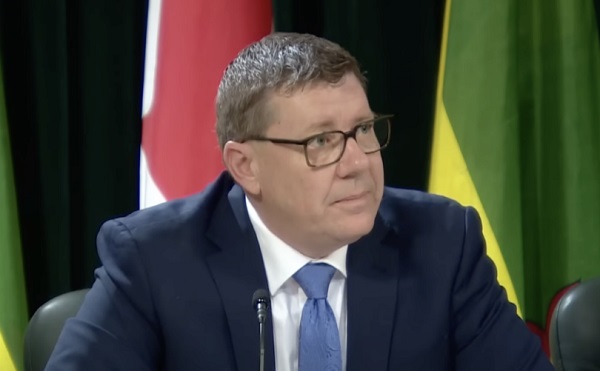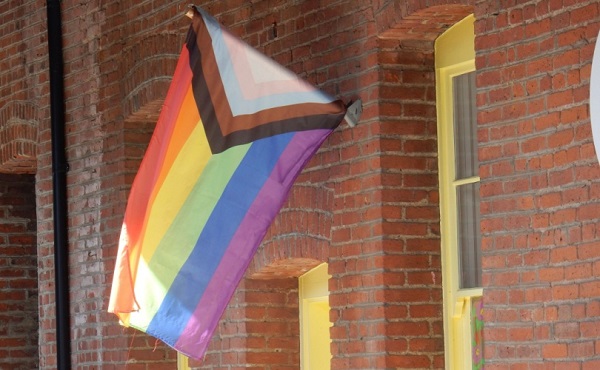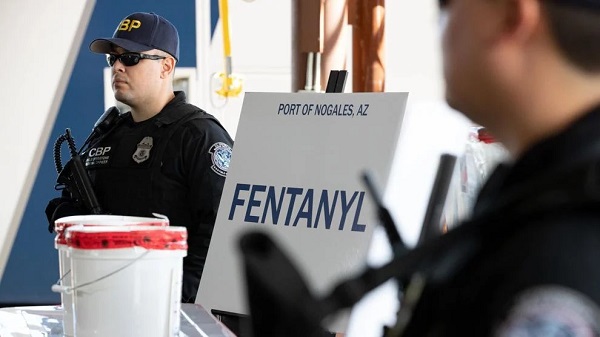Alberta
Raising the Bar and Drawing the Line – Men for the Eradication of Violence Against Women

On December 6, 1989, 14 women were brutally murdered in a gender-based attack on a mechanical engineering classroom at Montreal’s École Polytechnique institution. In an event now widely known as the “Montreal Massacre”, a man entered the classroom armed with a semi-automatic weapon and shouted, “you are all feminists,” while proceeding to open fire on the students.
The tragedy at École Polytechnique sent shockwaves around the world. The horrific event gave rise to a global dialogue regarding the deeply entrenched issue of gender-based violence and its many forms in modern society.
 In 1991, the White Ribbon Campaign was established in Toronto in honor of the 14 women who lost their lives in the Montreal Massacre. White Ribbon is now the largest global movement of men and boys working to “end violence against women and girls, promote gender equity, healthy relationships and a new vision of masculinity.”
In 1991, the White Ribbon Campaign was established in Toronto in honor of the 14 women who lost their lives in the Montreal Massacre. White Ribbon is now the largest global movement of men and boys working to “end violence against women and girls, promote gender equity, healthy relationships and a new vision of masculinity.”
With a focus on intersectionality, the organization aims to understand and be an ally to all those who experience gender-based violence and discrimination in a multitude of ways. This means educating the public on and standing up against violence, racism, homophobia, transphobia, misogyny and more.
The White Ribbon itself is a historical reference to breaking the silence, and represents a pledge to never commit, condone or remain silent about any form of gender-based violence.
 In the era of MeToo, harmful narratives often emerge in response to discussions of gender-based violence, particularly on the Internet. These include statements such as “not all men” and “men experience violence too” in response to shared experiences of violence perpetrated against women.
In the era of MeToo, harmful narratives often emerge in response to discussions of gender-based violence, particularly on the Internet. These include statements such as “not all men” and “men experience violence too” in response to shared experiences of violence perpetrated against women.
White Ribbon aims to increase education and understanding of disproportionate struggle by highlighting how the affirmation of struggle and suffering experienced by women is not the negation of male struggles in a similar arena. “Absolutely not all men have used violence,” states Humberto Carolo, Executive Director at White Ribbon “but all men have to be a part of the solution.”
“We have to change our responses. Instead of saying not all men, we need to say YES, all men need to step up, speak out, challenge their own behaviors, intervene when they can, and learn about these issues and how they affect women in their communities and around the world.”
Carolo has been on the front lines of gender-based violence prevention for his entire career, including 16 years with White Ribbon. According to him, his commitment to eradicate gender-based violence is both personal and professional. Being raised in a home where he and his family experienced violence has contributed to a deep conviction that men can – and must – be a part of the solution.
“I am a dad,” he says, “I have 3 sons. I promised myself I would do everything in my power to raise the next generation so they would not go through the things I went through, and the women in their lives would never experience the things the women in my family, and community, did.”
 Raising sons to understand the complexities of gender-based violence, while teaching them how to be a part of the solution is a monumental – and absolutely essential – task, rooted specifically in education, discussion, information, and practice.
Raising sons to understand the complexities of gender-based violence, while teaching them how to be a part of the solution is a monumental – and absolutely essential – task, rooted specifically in education, discussion, information, and practice.
“The existing process of socialization teaches men and boys in our society to be tough, to be strong, not to cry, to always be in control and always fight back,” says Carolo. “If we as men cannot deal with our feelings and emotions in a healthy way, it results in the extremely toxic use of violence, anger and control that is very harmful to those around us – particularly women and girls.”
To introduce solutions to a centuries old crisis, tailored educational initiatives are required, according to Carolo. Specifically, teaching men and boys to witness, notice, and accept that what is happening is problematic, while providing them with the tools and knowledge to address the issues and intervene wherever it is possible, and safe, to do so.
White Ribbon’s Draw the Line Campaign provides a series of potential situations and next steps designed to educate students, parents and teachers on the safe and appropriate actions to take in instances of sexual violence. This includes why, when, and how to draw the line.
 Ways to Draw the Line
Ways to Draw the Line
- Communicating with a friend to let them know their behavior is not okay
- Alerting others to a potentially dangerous situation
- Reporting the situation to someone you trust
- Calling 911 in situations of immediate danger
- Supporting the individual who has been affected by the violent actions
In the 30 years since the launch of the White Ribbon Campaign, the organization and its allies have grown and evolved alongside the changing times. Particularly in response to movements such as MeToo and Black Lives Matter, White Ribbon has continued to develop educational tools, campaigns, and resources to increase awareness, understanding and accessibility. The original call to action, which encourages men and boys to wear white ribbons and sign onto the pledge, remains in place, but is now supplemented by multi-dimensional approaches designed to address systemic factors of violence at their roots.
The White Ribbon website provides a host of resources for learning how to be an ally, how to respond to ongoing movements for women’s safety and equality in a productive way, how to understand and talk about consent, and so many more. For more information on White Ribbon and how to join the movement against gender-based violence, visit https://www.whiteribbon.ca
For more stories, visit Todayville Calgary.
Alberta
Danielle Smith slams Skate Canada for stopping events in Alberta over ban on men in women’s sports

From LifeSiteNews
The Alberta premier has denounced Skate Canada as ‘disgraceful’ for refusing to host events in the province because of a ban on ‘transgender’ men in women’s sports.
Alberta Premier Danielle Smith has demanded an apology after Skate Canada refused to continue holding events in Alberta.
In a December 16 post on X, Smith denounced Skate Canada’s recent decision to stop holding competitions in Alberta due to a provincial law keeping gender-confused men from competing in women’s sports.
“Women and girls have the right to play competitive sports in a safe and fair environment against other biological females,” Smith declared. “This view is held by a vast majority of Albertans and Canadians. It is also common sense and common decency.”
Women and girls have the right to play competitive sports in a safe and fair environment against other biological females.
This view is held by a vast majority of Albertans and Canadians. It is also common sense and common decency.
Skate Canada‘s refusal to hold events in… pic.twitter.com/n4vbkTx6B0
— Danielle Smith (@ABDanielleSmith) December 16, 2025
“Skate Canada‘s refusal to hold events in Alberta because we choose to protect women and girls in sport is disgraceful,” she declared.
“We expect they will apologize and adjust their policies once they realize they are not only compromising the fairness and safety of their athletes, but are also offside with the international community, including the International Olympic Committee, which is moving in the same direction as Alberta,” Smith continued.
Earlier this week, Skate Canada announced their decision in a statement to CBC News, saying, “Following a careful assessment of Alberta’s Fairness and Safety in Sport Act, Skate Canada has determined that we are unable to host events in the province while maintaining our national standards for safe and inclusive sport.”
Under Alberta’s Fairness and Safety in Sport Act, passed last December, biological men who claim to be women are prevented from competing in women’s sports.
Notably, Skate Canada’s statement failed to address safety and fairness concerns for women who are forced to compete against stronger, and sometimes violent, male competitors who claim to be women.
Under their 2023 policy, Skate Canada states “skaters in domestic events sanctioned by Skate Canada who identify as trans are able to participate in the gender category in which they identify.”
While Skate Canada maintains that gender-confused men should compete against women, the International Olympic Committee is reportedly moving to ban gender-confused men from women’s Olympic sports.
The move comes after studies have repeatedly revealed what almost everyone already knew was true, namely that males have a considerable innate advantage over women in athletics.
Indeed, a recent study published in Sports Medicine found that a year of “transgender” hormone drugs results in “very modest changes” in the inherent strength advantages of men.
Additionally, male athletes competing in women’s sports are known to be violent, especially toward female athletes who oppose their dominance in women’s sports.
Last August, Albertan male powerlifter “Anne” Andres was suspended for six months after a slew of death threats and harassments against his female competitors.
In February, Andres ranted about why men should be able to compete in women’s competitions, calling for “the Ontario lifter” who opposes this, apparently referring to powerlifter April Hutchinson, to “die painfully.”
Interestingly, while Andres was suspended for six months for issuing death threats, Hutchinson was suspended for two years after publicly condemning him for stealing victories from women and then mocking his female competitors on social media. Her suspension was later reduced to a year.
Alberta
Alberta’s huge oil sands reserves dwarf U.S. shale

From the Canadian Energy Centre
By Will Gibson
Oil sands could maintain current production rates for more than 140 years
Investor interest in Canadian oil producers, primarily in the Alberta oil sands, has picked up, and not only because of expanded export capacity from the Trans Mountain pipeline.
Enverus Intelligence Research says the real draw — and a major factor behind oil sands equities outperforming U.S. peers by about 40 per cent since January 2024 — is the resource Trans Mountain helps unlock.
Alberta’s oil sands contain 167 billion barrels of reserves, nearly four times the volume in the United States.
Today’s oil sands operators hold more than twice the available high-quality resources compared to U.S. shale producers, Enverus reports.
“It’s a huge number — 167 billion barrels — when Alberta only produces about three million barrels a day right now,” said Mike Verney, executive vice-president at McDaniel & Associates, which earlier this year updated the province’s oil and gas reserves on behalf of the Alberta Energy Regulator.
Already fourth in the world, the assessment found Alberta’s oil reserves increased by seven billion barrels.
Verney said the rise in reserves despite record production is in part a result of improved processes and technology.
“Oil sands companies can produce for decades at the same economic threshold as they do today. That’s a great place to be,” said Michael Berger, a senior analyst with Enverus.
BMO Capital Markets estimates that Alberta’s oil sands reserves could maintain current production rates for more than 140 years.
The long-term picture looks different south of the border.
The U.S. Energy Information Administration projects that American production will peak before 2030 and enter a long period of decline.
Having a lasting stable source of supply is important as world oil demand is expected to remain strong for decades to come.
This is particularly true in Asia, the target market for oil exports off Canada’s West Coast.
The International Energy Agency (IEA) projects oil demand in the Asia-Pacific region will go from 35 million barrels per day in 2024 to 41 million barrels per day in 2050.
The growing appeal of Alberta oil in Asian markets shows up not only in expanded Trans Mountain shipments, but also in Canadian crude being “re-exported” from U.S. Gulf Coast terminals.
According to RBN Energy, Asian buyers – primarily in China – are now the main non-U.S. buyers from Trans Mountain, while India dominates purchases of re-exports from the U.S. Gulf Coast. .
BMO said the oil sands offers advantages both in steady supply and lower overall environmental impacts.
“Not only is the resulting stability ideally suited to backfill anticipated declines in world oil supply, but the long-term physical footprint may also be meaningfully lower given large-scale concentrated emissions, high water recycling rates and low well declines,” BMO analysts said.
-

 Health20 hours ago
Health20 hours agoSaskatchewan woman approved for euthanasia urged to seek medical help in Canada rather than US
-

 Indigenous20 hours ago
Indigenous20 hours agoResidential school burials controversy continues to fuel wave of church arsons, new data suggests
-

 Health1 day ago
Health1 day agoCanadian gov’t considers sharing census data on gender-confused children
-

 International20 hours ago
International20 hours agoFBI didn’t think it had cause to raid Trump but DOJ did it anyway
-

 Alberta4 hours ago
Alberta4 hours agoDanielle Smith slams Skate Canada for stopping events in Alberta over ban on men in women’s sports
-

 Crime2 days ago
Crime2 days agoTrump designates fentanyl a ‘weapon of mass destruction’
-

 Digital ID2 days ago
Digital ID2 days agoCanada releases new digital ID app for personal documents despite privacy concerns
-

 Business1 day ago
Business1 day agoCOP30 finally admits what resource workers already knew: prosperity and lower emissions must go hand in hand




